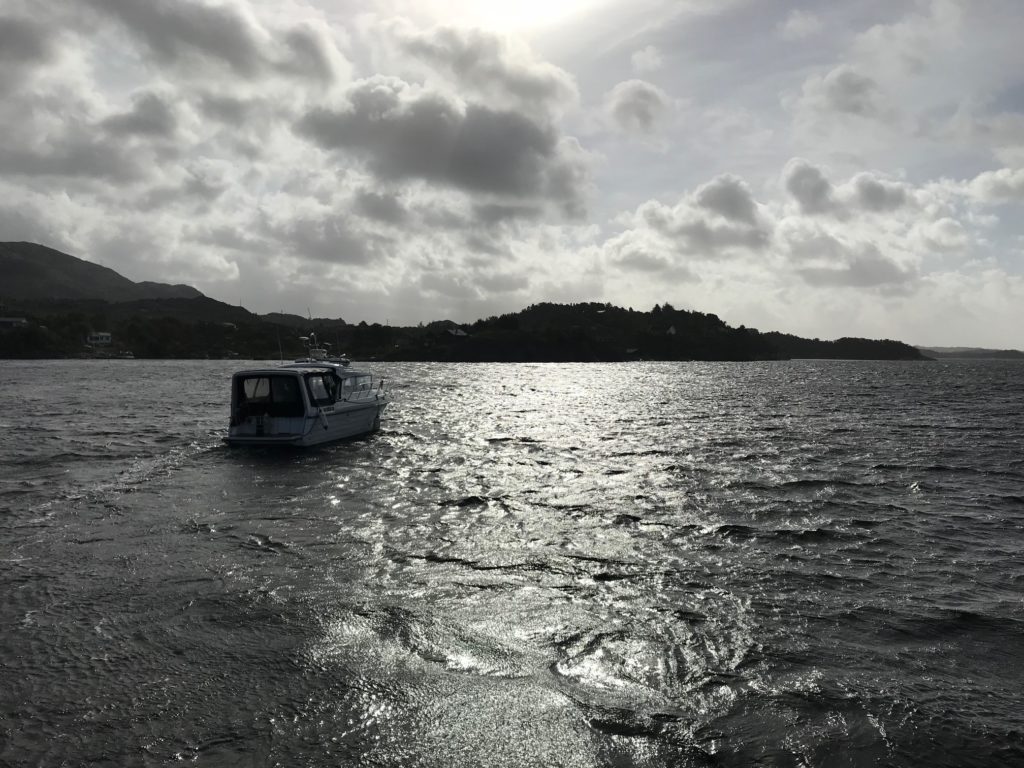Posted by: Felix Halpaap, Photos by: Stéphane Rondenay
With SWaMMIS coming to an official end soon, we set off for the final project meeting on Sotra on Monday, 16 September. What a great time it’s been since the start nearly four years ago, and the meeting turned out to be a worthy conclusion!
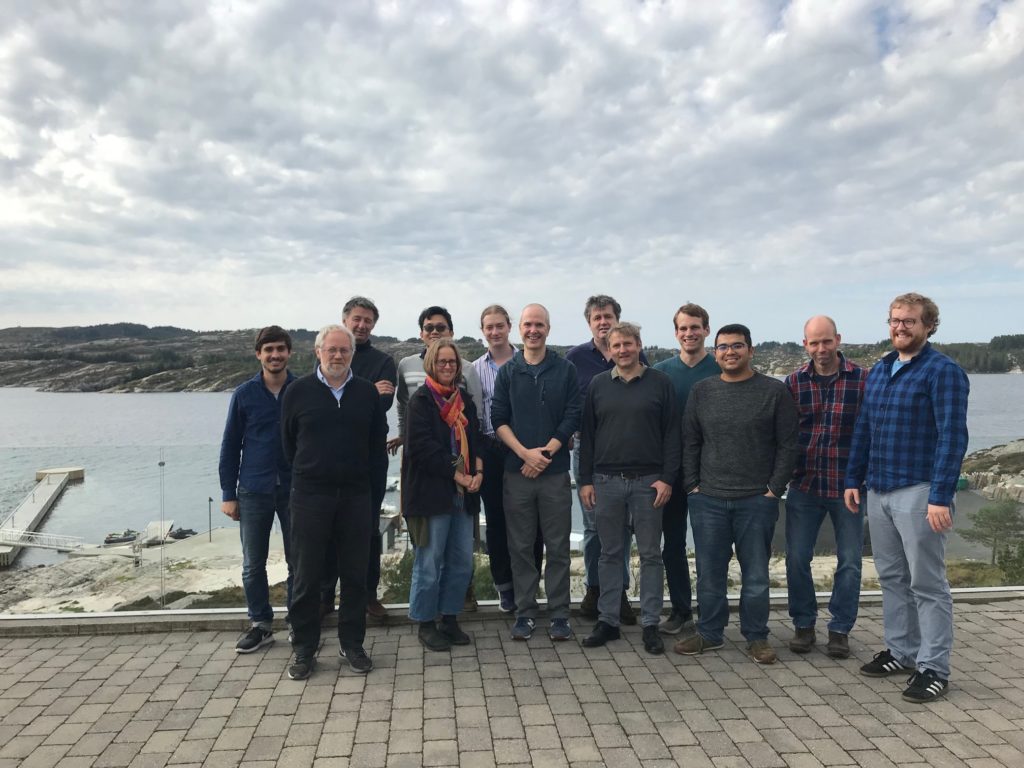
We checked in at the Panorama Hotel all the way at the southern tip of Sotra. Sotra is a narrow, north-south-stretching island made up of pre-Caledonian basement rocks, and separates Bergen from the open North Sea. Here, we were optimally located for our field trip to some world-class outcrops on the third day of the meeting. But first, we spent two days of exciting geoscientific discussions in a cozy conference room – away from any distractions except the view of the sea and rocks.
The gang that joined the meeting consisted of the project’s original investigators (Stephane, Saskia, Håkon, Ritske, Lars, Henk), those funded through it (Hongliang as a postdoc and me, Felix, as a PhD student), associates (Sebastian, who got involved with his Masters thesis, and Florian and Hasbi who work on subduction zone earthquakes and imaging), and Thomas Meier (Uni Kiel) and Christian Schiffer (Univ. of Durham) as experts on the Hellenic subduction zone and receiver function imaging, respectively.
Even though the group was biased toward seismologists, with geodynamic modelers taking second place, everyone’s talks still stretched over a wide range of topics. Stéphane kicked off the sessions with an overview of what SWaMMIS had set out to investigate – the conundrum of deep earthquake mechanisms in subduction zones – and what we together had achieved. The summary provided a good start into the following talks on subduction zone earthquakes:
- Felix: on how the updip flow of fluids in the subducting crust triggers the bulk of slab seismicity in many cold subduction zones including Greece
- Thomas: on how the spatio-temporal clustering of earthquakes in southeastern Greece reveals fluid flow in the overlying crust
- Hasbi: on a new 1-D velocity model for the Myanmar subduction zone, which helped reveal the depth-extent of aftershocks on the huge Sagaing fault
- Florian: on a new method for 3-D imaging of subduction zones through Kirchoff migration of receiver functions
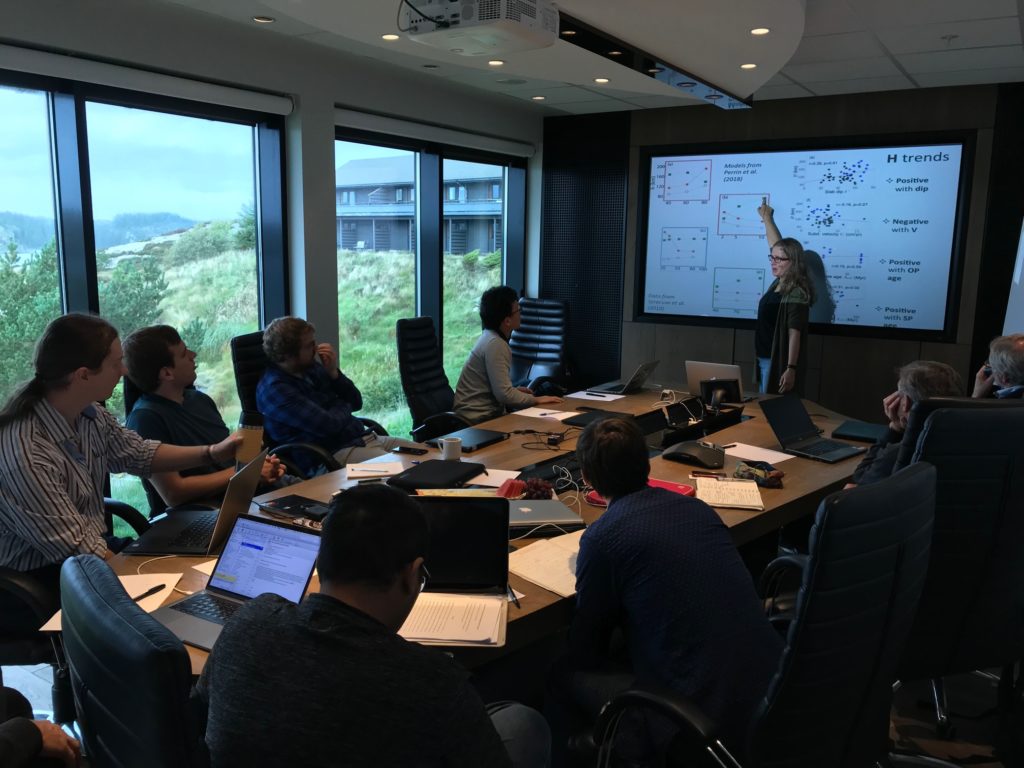
The next session focused on geodynamic models that help us understand the physics of plate tectonics in general and subduction more specifically:
- Hongliang: on modeling slab dehydration and compaction-driven fluid migration in subduction zones
- Saskia: on the subduction zone properties that influence the location of volcanic arcs; including slab dip, plate age, subduction velocity
- Sebastian: on what conditions make back arcs open, either stretching the crust or forming mountain belts instead
- Ritske: on how magma production during continental rifting varies with the potential temperature of the mantle, rather than the spreading velocity
You will probably note that we were missing at this point the geologic observations that have initiated many discussions on how deep earthquakes occur. One hypothesis describes that they form through shear runaway, a process that is associated with the formation of pseudotachylites. These mm-scale pseudotachylites consist of glassy material that was formed when the rock melted during earthquakes at high temperatures and pressures. Plenty of these pseudotachylites can be seen in the field on Holsnøy, an island just north of Sotra. Holsnøy is probably the prime location worldwide for the field study of metamorphism and deep earthquakes, and it was no coincidence that this synthesis meeting took place nearby. Hence Håkon was up next to talk about:
- Håkon: how fluids induce metamorphism, and what the field observations from Holsnøy tell us on how deep earthquakes and fluid flow occurred during eclogitization of the deep crust – preparing us for the field trip on the next day.
Since these deep earthquakes formed in rocks now exposed at the surface, the Norwegian west coast has made a big leap through the plate tectonic cycle: after the collision and partial subduction during the Caledonian orogeny, rocks were educted, and more recently (meaning: more than 300 million years later), the North Atlantic started to rift open, separating us farther and farther from Greenland. Today’s tectonic activity on the coast may seem less spectacular, but there is nonetheless a lot going on – and a long geologic history to be seen, written in the rock record. We finished with a “local tectonics” session:
- Christian: on the suspected occurrence of eclogite bodies and serpentinisation of mantle peridotites below eastern Greenland, observed with receiver functions
- Lars: on today’s earthquakes and earthquake monitoring in Norway, in particular off the west coast – where some of the larger recent earthquakes in Norway occurred
With plenty of interesting talks, it was probably not unexpected that we were running late already after the first talks! After all, an informal meeting like this is a great opportunity to discuss what advancements in the science we can agree on, and which questions will be the next to solve. The exciting exchange meant that dinner both nights were delayed, and that was certainly not the chef’s fault. Fortunately, they did a great job, and with west-coast inspired Nordic cuisine we got ready for the final day: the field trip to Holsnøy.
Holsnøy field trip 19.09.2018 – report
On Wednesday we were picked up in a 30-foot boat to get to Holsnøy via the shortest route – straight up north through the fjords. The wind and hence the waves were already picking up in the morning, with a serious storm forecast for the evening, but our experienced skipper got us safely to the pier in Sætre. No less experienced was our leader in the field, Håkon, who himself discovered, recognized and described many of the geologic processes seen here for the first time.
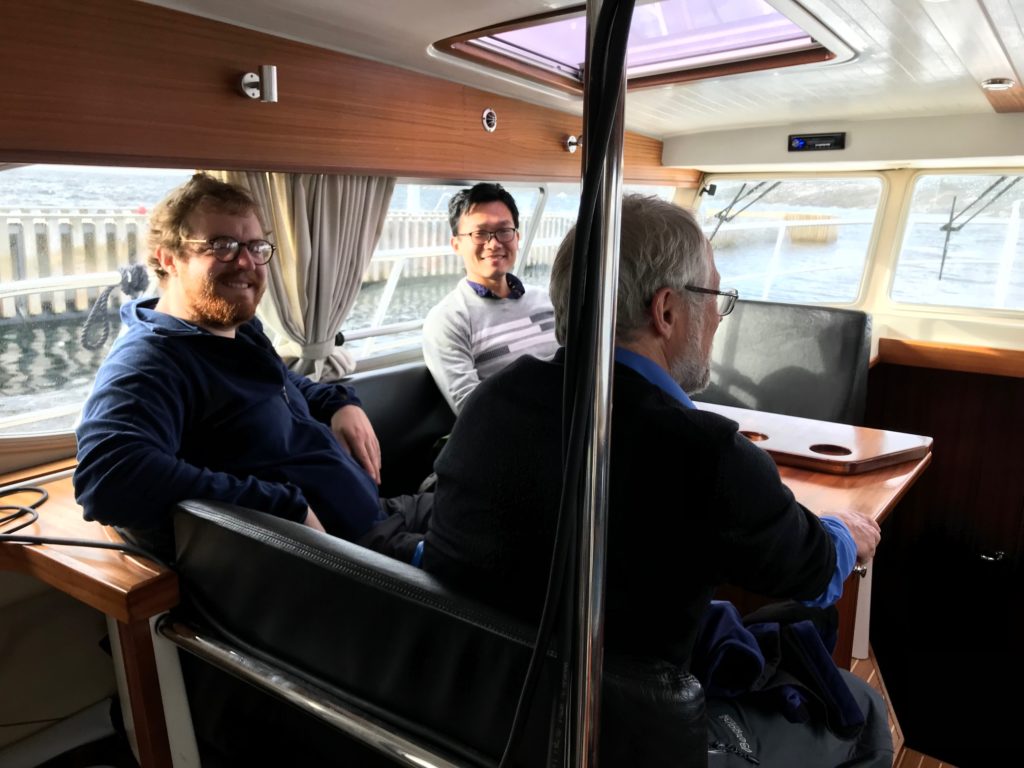
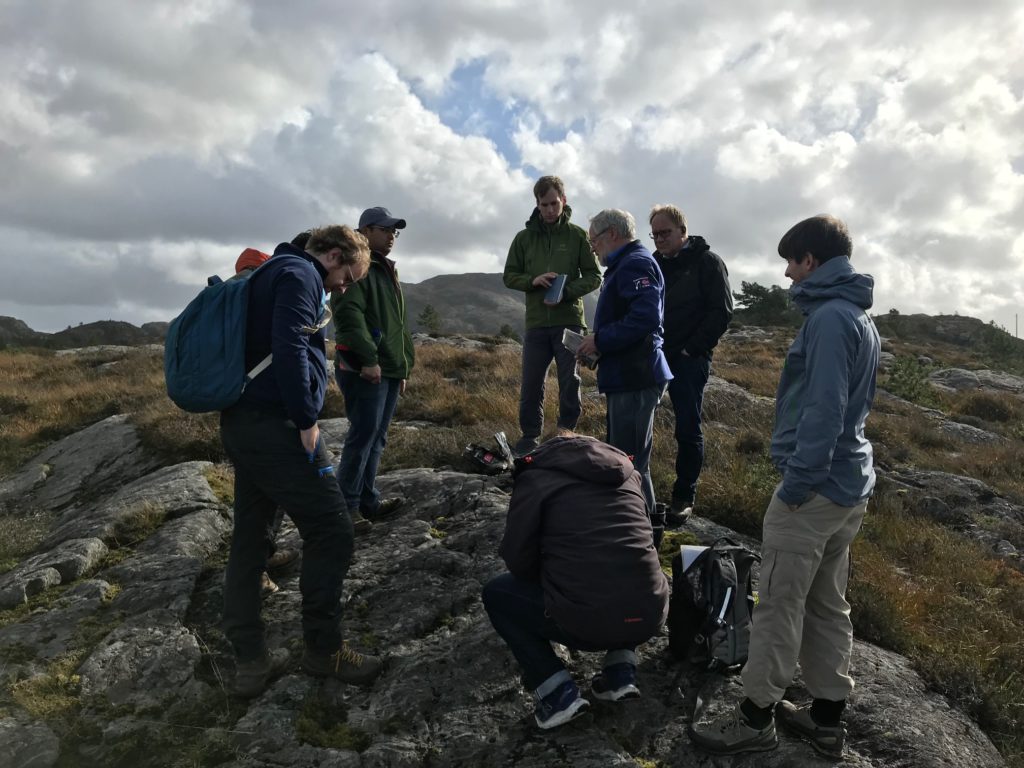
Just off the boat, the first outcrop was located a few hundred meters away. It includes a spectacular wall where car-sized granulite chunks can be seen “floating” in eclogite, showing how the metamorphic process was only partially completed, owing to the limit in fluid supply to drive the process. We were happy to stay dry all day – which gave us time to investigate several more outcrops. There we could see the interplay of shear zones, pseudotachylite formation and fluid-driven metamorphism – and initiated discussions that may guide our future research.
You can find additional background on the Holsnøy field area and our field trip leader Håkon Austrheim here.
And finally…
I would sincerely like to thank everyone involved in SWaMMIS for the great time it’s been at this meeting, and in the last four years. I believe that we have been able to achieve some cutting-edge results that both Hongliang and me will soon submit, so stay tuned for a few more papers to come out!
